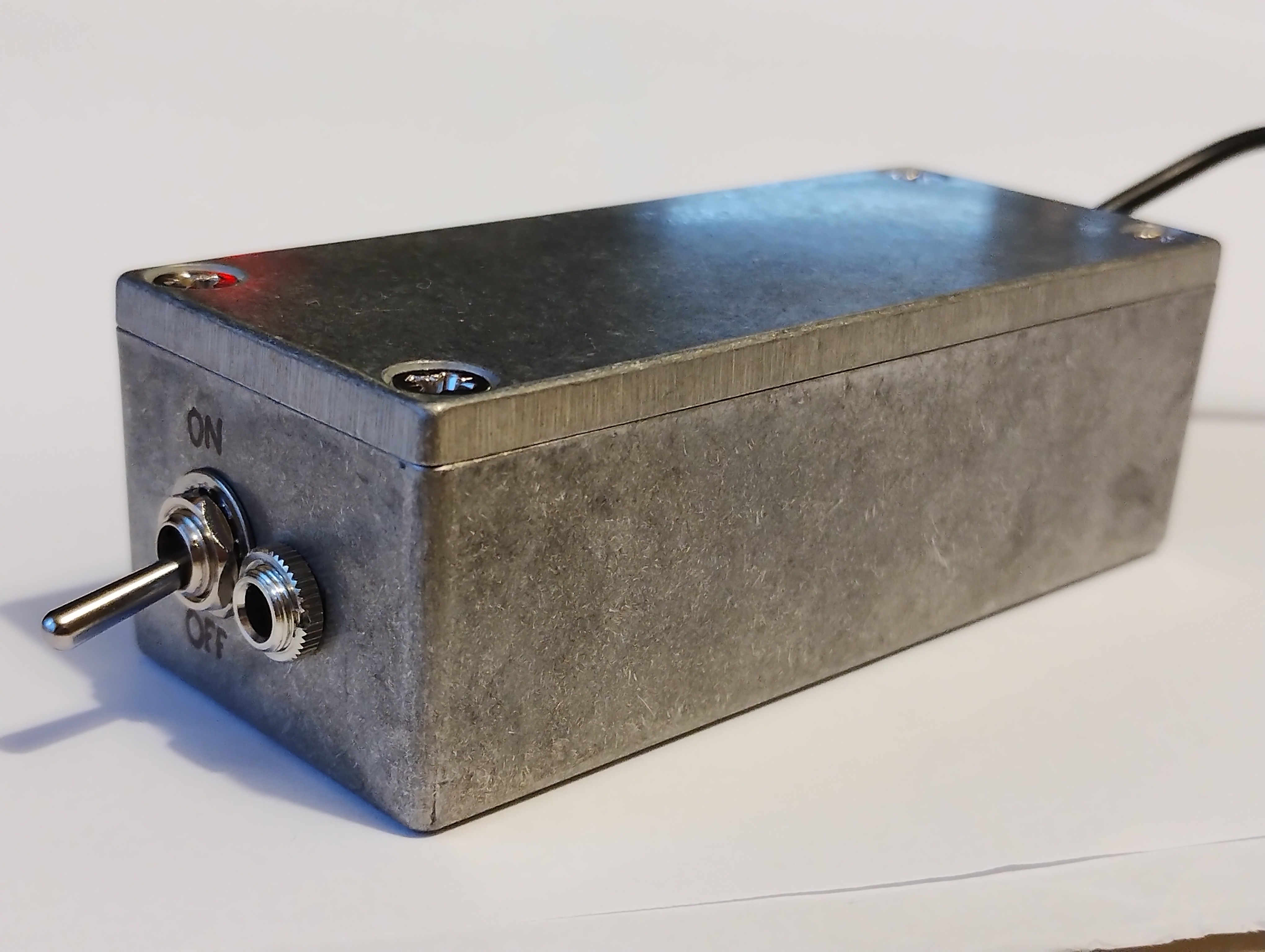Piezo transducers like the one we're using have a very high impedance output and therefore need a high-impedance input preamplifier in order to drive line inputs (or headphones). Also, the sounds we're trying to capture are very quiet so we also need some gain.

I built this basic circuit on veroboard and put it in a metal box. I actually used a TLC271CP opamp, but I don't think it matters much. It has a gain of 1000x, and a high-pass to try to cut mains hum and lower harmonics, without really affecting the 'tick tock' sounds.

I can't stress enough the need for screened cable on the input, and a metal box, to keep out mains hum - nothing else comes close!
I tried connecting this circuit to my Motorola smart phone (via a 4-pin 'TRRS' plug) and it kinda worked, but was defeated by poor software! The phone kept insisting it used the built-in mic every now and then, and I had to keep unplugging and replugging to force it to use the external mic instead. Very annoying, so in the end I gave up and used a 3-pin 'TRS' plug, aka regular headphone jack, to plug into my PC. Besides, the TG software is much better than any of the Android apps I tried. More later...
Discussions
Become a Hackaday.io Member
Create an account to leave a comment. Already have an account? Log In.
Hi, I used the HIGH bias select option in my circuit, though I don't think it made much difference when I tried LOW. Yes, my audio cable shields are connected to _chassis_ (i.e. the metal box) and also, in one place, connected to the battery 0V of the circuit. Doing that made the most difference to mains hum. If you're hearing noise (not hum) I think it's less likely to be shielding, and more likely maybe a broken connection. You could try connecting the input to the circuit to 0V and see if the noise goes away. If it does, then it's coming from outside the circuit, if not then it's the circuit itself somehow. Hope that helps.
Are you sure? yes | no
Hi, I'm trying to replicate this, but the preamp does not work very well for me. I'm not fully versed in analogue electronics, although I can solder in self-defence. I tried to take as much inspiration from your post and circuit diagram as I could, up to choosing the same preamp, TLC271. What BIAS SELECT are you using? When I connect to HIGH, I can hear the sensor quite well when I tap it, but there is still a lot of noise and no chance to hear anything from the watch itself. I tried to also set BIAS to LOW (grounding it) but I could not hear anything meaningful while the noise level remained the same. I did not try the Medium setting (although probably the joint between R8 and R9 could make up for a sufficient voltage divider.
I'm powering the circuit with 5V over USB from my laptop.
I have not yet experimented much with shielding. Are you grounding the shielding from the audio cables? I did not try to solder any grounding permanently, just poke i pin into it and ground that, but it did not seem to make a difference.
Are you sure? yes | no